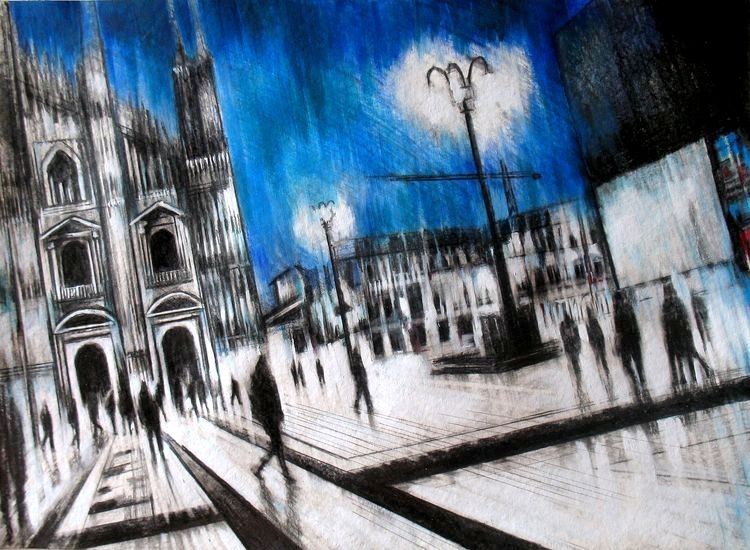On 3rd March 2009 in New Ars Italica Gallery in Milan, will open Mariarosaria Stigliano’s solo exhibition “Urban Passengers”.
Protagonists in “Urban Passengers” are the stations as a place of constant transfer, the streets full of cars and passerby’s projected always in a fickle direction, and at last the undergrounds in which waiting moments and quick trains passing alternate themselves. It’s an exhibition in which Mariarosaria Stigliano’s drawings and oil paintings are witness of a research about the mark, the non- permanency, the speed and the transition of the imagine in the urban contemporary reality. This exhibition event, into these substantial foundations, suggests a way where the man appears continuously thrown in a changeable direction, divided between the innumerable ways to cover in more and more different urban sceneries.
The exhibition will remain open from the 3rd till the 15th of March 2009.
Vernissage: On Tuesday 3rd March at 7 p.m.
Event created by: Mariasole Brivio Sforza e Kristina Snajder
New Ars Italica Gallery. Via De Amicis, 28. Milano
Opening time:
from Tuesday to Friday from 11 a.m. to 2 p.m. and from 4p.m. to 7p.m.
On Monday and Saturday from 4 p.m. to 7p.m.
On Sundays and holidays after appointments: 02 876533
Urban Passengers
“In the 90s an artistic generation, influenced by young underground cultures (skaters, graffiti, punk and hip-hop), begins a creative path and of research which is based on the street life. Mariarosaria Stigliano, born in Taranto in 1973, since her academic studies in Rome undergo the charm of this underground culture, in which different ways of working, at the beginning very different between each other, with time they harmonized in a single aesthetics, what is generally called “Metropolitan Art”.
From this artistic environment, in a strong countertendency from the academic trends, born a thick net of publications, art galleries, music, cloths and music companies. From the metropolitan cultural ghettos, in these times the underground art comes back to the city to exert a strong influence upon the urban spaces, such as in fashion, in literature, in cinema and in marketing.
This aesthetics, even if there are a lot of differences in itself, has some unified lines: the iconographic pop language, the sense of absurd, the strong reference to the sexuality, or even to sex, the depersonalization of the image, the self-referential ethics. Stigliano’s “leit motif” is the city, seen as a landscape in constant becoming, an alienator and lunatic place, where people hide themselves, where they disappear, leaving evanescent emanations of their presence, like ghosts’ tracks.
The nomad body is in opposition to the bright background, wrapped by a neon light, accustomed to the surrounding space, which is perceived like the architectural structure of the devoid life buildings, of the long and cold passageways, of the non-places, according to the happy Marc Augè’ s definition. As a real underground culture’s aesthetic, the Stigliano explores her creativity, which shines and lives in the pictorial inquiry that she discovers in the rhythm of the shape and of the insisted two-tones style, the most intimate essence in her art.
The metropolitan landscapes have a dynamism, result of the right use of the chromatic contrast, both visual and emotional, that is here taken to extremes, but which is reconciled at last by the artist’s photographic eye, that catches in it the orthogonal structure of the city spaces and that she reformulates with a rapid and nervous line. Stigliano’s works fascinate especially because the evident contradictions: her way to paint stands on the contraposition man/environment, where shape is to line, black is to white, shadow is to light.
Arman Carlo Mariani
